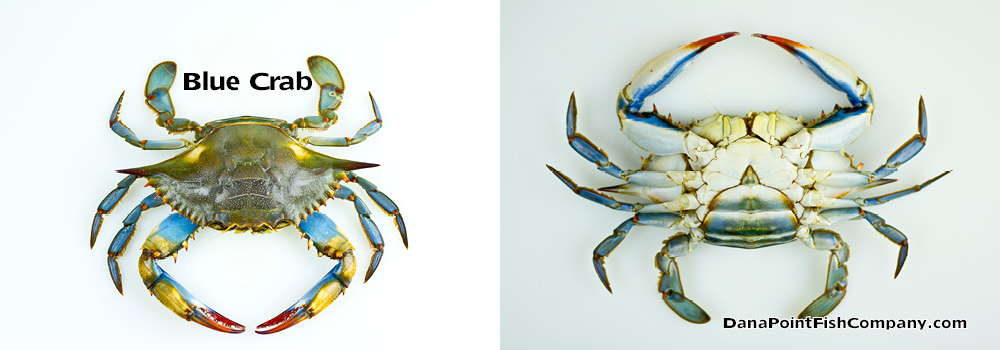Blue crab – Maryland blue crab – swimming crab – Callinectes sapidus. This crab is also known as the Atlantic blue crab or Chesapeake blue crab.
Identifying Characteristics and Biology
- The blue crabs are swimming crustaceans with characteristic blue claws. The blue pigments in them turn a reddish or pinkish color when cooked. Shells range from brown to olive brown. Blue crabs can reach 9 inches across.
- The differences between the male and female blue crabs from Wikipedia:
-
C. sapidus individuals exhibit sexual dimorphism. Males and females are easily distinguished by the shape of the abdomen (known as the “apron”) and by color differences in the chelipeds, or claws. The abdomen is long and slender in males, but wide and rounded in mature females. A popular mnemonic is that the male’s apron is shaped like the Washington Monument, while the mature female’s resembles the dome of the United States Capitol. Claw color differences are more subtle than apron shape. The immovable, fixed finger of the claws in males is blue with red tips, while females have orange coloration with purple tips. A female’s abdomen changes as it matures: an immature female has a triangular-shaped abdomen, whereas a mature female’s is rounded.
- Blue crabs grow by molting; females molt about 18 times and males about 20 times.
- Blue crabs are resourceful omnivore feeders looking for smaller crustaceans, mollusks, plants, small fish, and other smaller crabs.
Range and Habitat
- These crabs can be found on the western Atlantic ocean from Nova Scotia to Argentina and the Gulf of Mexico, and caught year round on the Chesapeake Bay.
- Blue crabs are found in tidal waters and bay beds, enjoying the bottom floor of the seabed.
Market Forms
- Very popular, it’s Maryland’s largest commercial fishery. Maryland, Virgina, North Carolina, and Louisiana are the four most important areas for the commercial blue crab industries.
- Blue crabs are sold in markets live or steamed.

